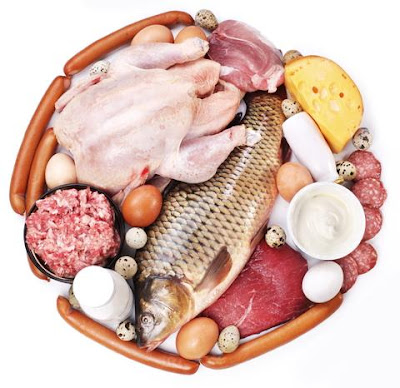"Foods from animals like Lean meat, fish, poultry, eggs, cheese, ham, sausages, sardines, liver, heart, kidney, tripe, etc. are excellent sources for protein, iron, B complex, and fat-soluble vitamins and fat."
 |
| Photo courtesy of Breathingcenter.com |
The food from animal sources (FFA) food group is the one that receives the most attention for many reasons most of which are valid. Foods in this food group provide nutrients that are more bioavailable to the body, meaning that the body absorbs and uses nutrients from these sources much easier than other food sources.
Foods from animals like Lean meat, fish, poultry, eggs, cheese, ham, sausages, sardines, liver, heart, kidney, tripe, etc. are excellent sources for protein, iron, B complex, and fat-soluble vitamins and fat. Other food from animals like red meats and organ meats are excellent sources of haem iron. and other foods like fresh milk, evaporated, skimmed; yogurt, cheese provides us with calcium, protein, vitamins A and D, thiamine, riboflavin, carbohydrate, and fat.
Foods in this food group are often high in fat and cholesterol and can be high in sodium depending on how they are prepared for consumption. Although trimming off fatty tissue can help to reduce the fat content consumed, this is usually not enough as fat is usually intertwined in the muscle of meats, this is called marbling. It is recommended that adults eat 2-3 servings per day and one serving of meat is 4oz, which is about the size of a deck of cards.
Due to the high density of nutrients in foods from animals, we actually do not need to consume as much as we usually do to receive the number of nutrients we need. But these foods are usually delicious, in part to their high-fat content and we usually overeat.
Below is the table showing the accepted standard for a serving of foods within this group that are popularly consumed in the Caribbean.
These serving sizes might seem small compared to the portion sizes we usually eat, but please bear in mind that our meals should have at least three different food groups represented, and whatever we might think we are missing out on can be substituted with another more filling food from another food group.


0 comments:
Post a Comment